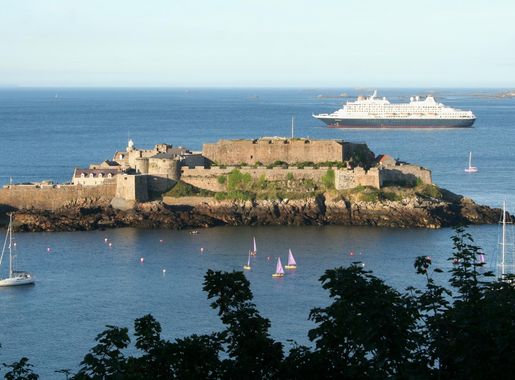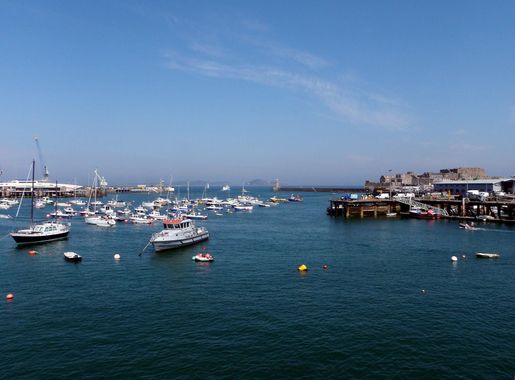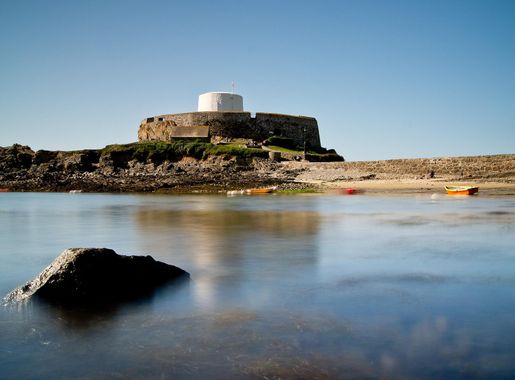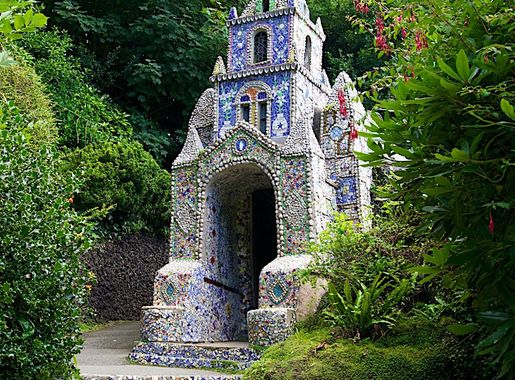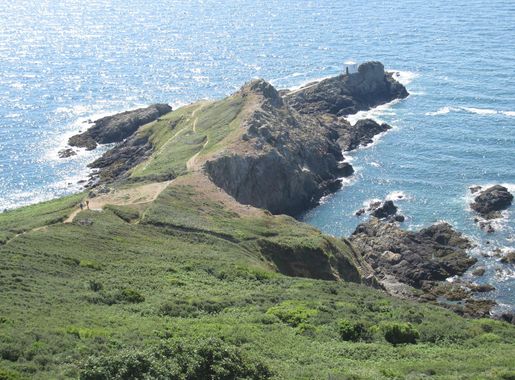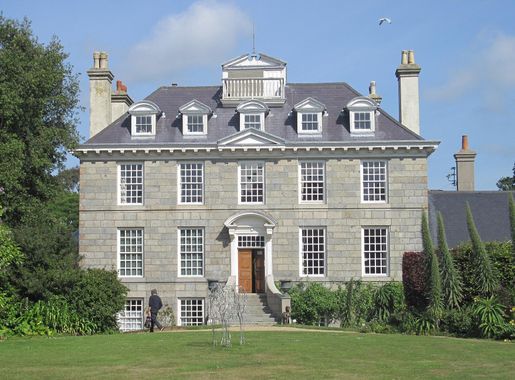
Les Tielles: Guernsey's Hidden Coastal Gem
Discover the tranquil beauty and rich history of Les Tielles, Guernsey's hidden coastal gem, perfect for hiking, rock pooling, and bird watching.
Les Tielles is a stunning coastal area located in the northeastern part of Guernsey, a picturesque island in the English Channel. This serene destination offers visitors a chance to experience the natural beauty of Guernsey's rugged coastline, with its dramatic cliffs, hidden coves, and sweeping ocean views. The area is perfect for hiking, with well-marked trails that take you through lush greenery and past historic landmarks, offering breathtaking vistas at every turn. One of the highlights of visiting Les Tielles is the chance to explore the unique tidal zones, where the sea reveals fascinating marine life during low tide. This makes it a great spot for rock pooling and discovering the diverse creatures that inhabit the shoreline. The area's rich biodiversity is also a draw for bird watchers, with numerous species of seabirds nesting along the cliffs. For those interested in history, Les Tielles is home to several ancient sites, including remnants of old fortifications and prehistoric burial mounds. These historic landmarks provide a glimpse into the island's past and add an extra layer of intrigue to your visit. Whether you're looking for a peaceful retreat or an adventure-filled day, Les Tielles offers something for everyone.
Local tips in Les Tielles
- Wear comfortable hiking shoes as the terrain can be uneven.
- Check the tide times to make the most of rock pooling opportunities.
- Bring binoculars for bird watching along the cliffs.
- Pack a picnic to enjoy with stunning ocean views.
- Visit early in the morning or late in the afternoon to avoid crowds.
Les Tielles: Guernsey's Hidden Coastal Gem
Les Tielles is a stunning coastal area located in the northeastern part of Guernsey, a picturesque island in the English Channel. This serene destination offers visitors a chance to experience the natural beauty of Guernsey's rugged coastline, with its dramatic cliffs, hidden coves, and sweeping ocean views. The area is perfect for hiking, with well-marked trails that take you through lush greenery and past historic landmarks, offering breathtaking vistas at every turn. One of the highlights of visiting Les Tielles is the chance to explore the unique tidal zones, where the sea reveals fascinating marine life during low tide. This makes it a great spot for rock pooling and discovering the diverse creatures that inhabit the shoreline. The area's rich biodiversity is also a draw for bird watchers, with numerous species of seabirds nesting along the cliffs. For those interested in history, Les Tielles is home to several ancient sites, including remnants of old fortifications and prehistoric burial mounds. These historic landmarks provide a glimpse into the island's past and add an extra layer of intrigue to your visit. Whether you're looking for a peaceful retreat or an adventure-filled day, Les Tielles offers something for everyone.
When is the best time to go to Les Tielles?
Iconic landmarks you can’t miss
Castle Cornet
Discover the rich history and stunning vistas at Castle Cornet, Guernsey's iconic fortress and museum that tells the island's maritime story.

The Little Chapel
Discover the enchanting Little Chapel in Guernsey, a whimsical blend of art and spirituality, perfect for a serene escape and unforgettable memories.
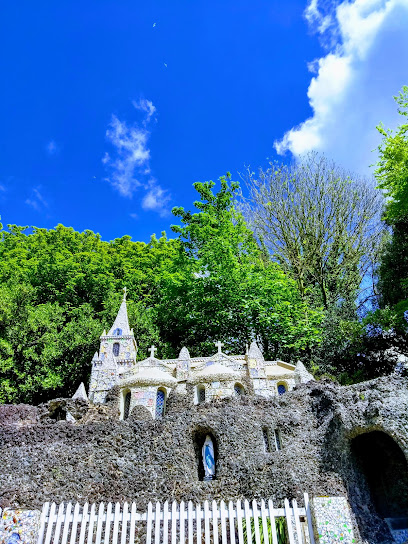
Saumarez Park
Discover the enchanting Saumarez Park in Guernsey, a tranquil oasis featuring lush gardens, scenic paths, and a rich history perfect for outdoor adventures.
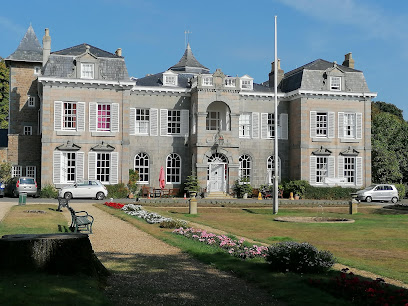
Hauteville - Victor Hugo House
Explore Victor Hugo's literary legacy at the historic Victor Hugo House in Guernsey - a must-visit for literature lovers and history enthusiasts.
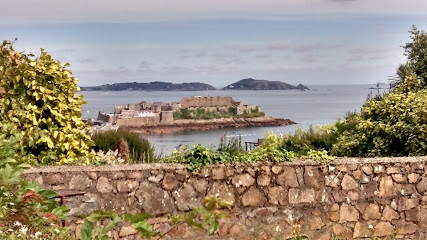
German Occupation Museum
Discover the poignant history of Guernsey during World War II at the German Occupation Museum, a profound testament to resilience and survival.
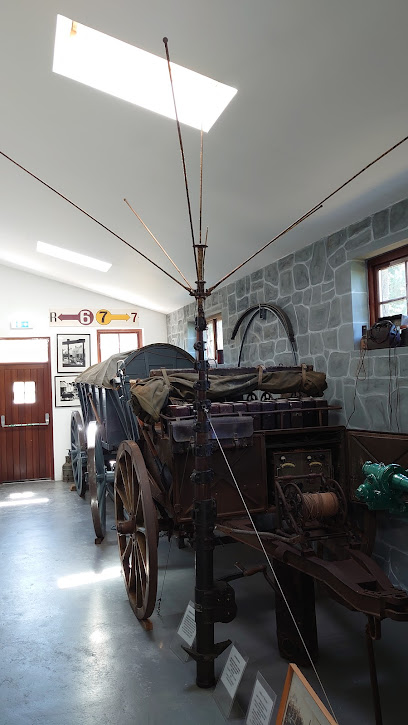
Sausmarez Manor
Explore the historical Sausmarez Manor in Guernsey, a stunning blend of rich heritage, beautiful gardens, and captivating architecture.
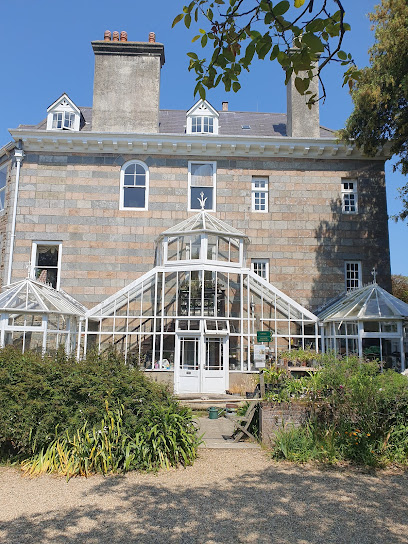
German Underground Hospital
Discover the poignant history of wartime Guernsey at the German Underground Hospital, a captivating museum that reveals the island's hidden past.

Fort Grey Shipwreck Museum
Explore maritime history at Fort Grey Shipwreck Museum, a captivating attraction showcasing Guernsey's shipwreck tales and stunning coastal views.
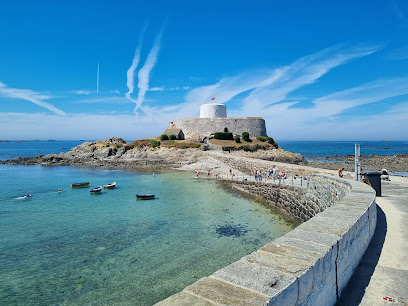
Fort Hommet
Explore Fort Hommet in Guernsey - a historical fortress with stunning coastal views and rich military heritage.
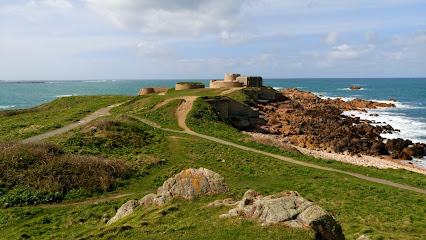
Vale Castle
Discover the history and breathtaking views of Vale Castle, a must-visit historical site in Guernsey.

Moulin Huet Bay
Discover the tranquil beauty of Moulin Huet Bay, a stunning public beach in Guernsey, perfect for relaxation, exploration, and breathtaking sunsets.

La Valette Underground Military Museum
Explore Guernsey's wartime history at La Valette Underground Military Museum, a unique underground experience showcasing World War II artifacts and stories.
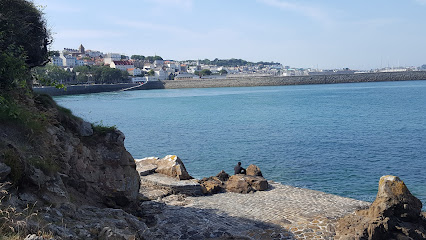
German Naval Signals HQ
Uncover the rich World War II history at the German Naval Signals HQ in Guernsey, a captivating museum experience for all history lovers.
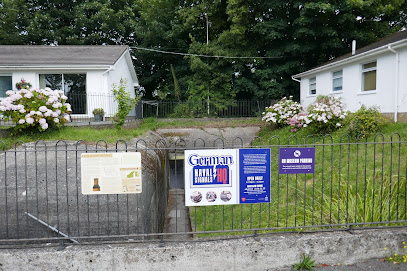
Table des Pions - Fairy Ring
Explore the mystical Table des Pions in Guernsey, a historical landmark steeped in fairy tales and local folklore, perfect for history lovers and nature enthusiasts.
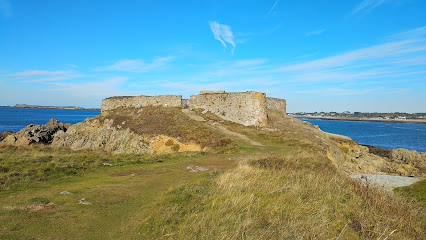
Bluebell Woods
Explore the vibrant bluebells and serene landscapes of Bluebell Woods, a tranquil nature preserve in Guernsey that enchants every visitor.

Essential places to dine
The Rockmount - Randalls
Discover The Rockmount - Randalls: A perfect blend of coastal beauty and gourmet flavors at this charming gastropub in Guernsey.

Crabby Jack's
Experience delightful seafood dining at Crabby Jack's by Vazon Bay, where breathtaking views meet exceptional flavors.
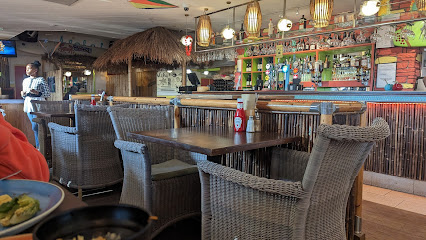
Octopus Restaurant
Experience the finest seafood dining at Octopus Restaurant in St. Peter Port - where local flavors meet stunning coastal views.
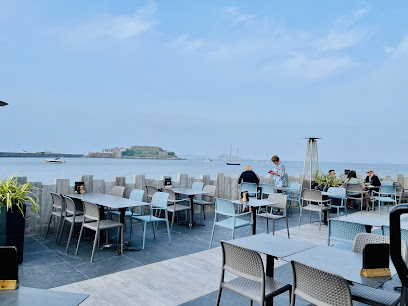
Dhaka
Experience the vibrant culture and authentic flavors of Dhaka, Bangladesh's bustling capital filled with culinary delights.
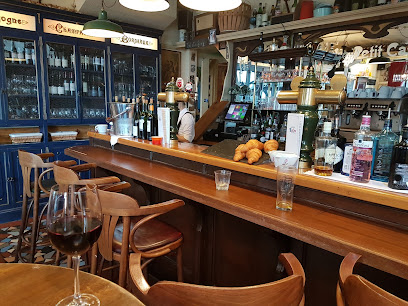
Cobo Bay Hotel & The Beach Terrace
Discover the perfect seaside escape at Cobo Bay Hotel & The Beach Terrace – where stunning views meet exceptional dining in Guernsey.

Fleur du Jardin
Experience authentic Guernsey cuisine at Fleur du Jardin—a charming restaurant and pub in Castel offering delightful meals in a cozy setting.

Le Nautique Restaurant
Discover gourmet seafood at Le Nautique Restaurant in St Peter Port – where fresh ingredients meet stunning harbor views.
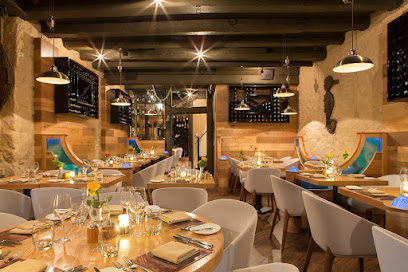
The Queens Inn - Randalls
Experience the best of local cuisine at The Queens Inn in Guernsey – where culinary excellence meets warm hospitality.
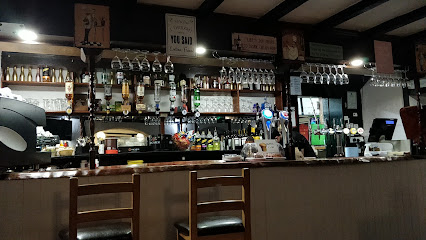
Fermain Valley Hotel
Experience luxury and gourmet dining at Fermain Valley Hotel in Guernsey - where breathtaking views meet exceptional culinary delights.

Best Western Hotel De Havelet
Experience exquisite dining and comfortable lodging at Best Western Hotel De Havelet in beautiful Guernsey.

Pier 17 Restaurant
Experience exquisite local seafood and stunning waterfront views at Pier 17 Restaurant in Guernsey.
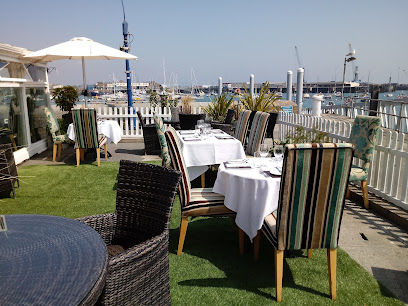
Búho
Discover the vibrant flavors of Mexico at Búho in Guernsey—where every meal is a celebration!
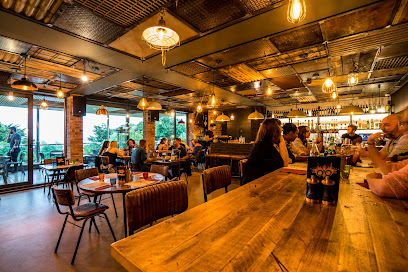
The Lobster and Grill
Experience exquisite seafood at The Lobster and Grill in Guernsey - where local flavors meet culinary excellence.
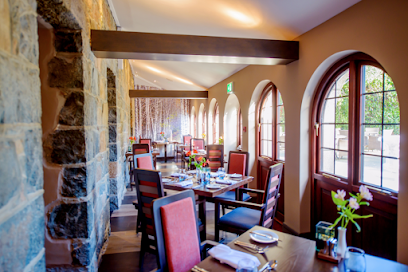
Le Friquet Hotel
Experience the best of Guernsey at Le Friquet Hotel - where delightful dining meets cozy accommodations in a charming setting.

Pickled Pig
Experience Guernsey's culinary gem at The Pickled Pig - where fresh local ingredients meet exceptional dining.
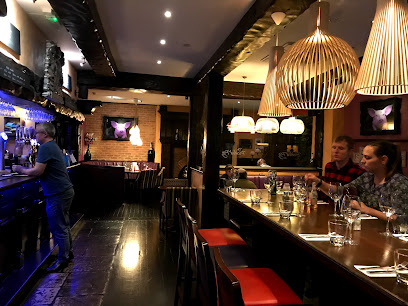
Markets, malls and hidden boutiques
Guernsey Candles
Discover the charm of Guernsey Candles, a delightful gift shop specializing in handcrafted candles and unique souvenirs that capture the essence of the island.
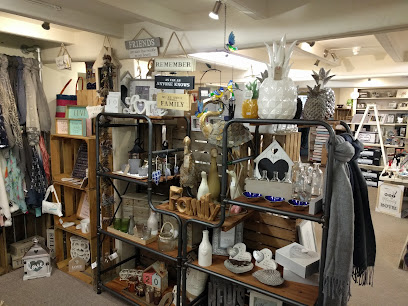
Keyprice
Explore Keyprice, the charming general store in Guernsey, offering a wide range of local goods and essentials for every traveler.

Forest Stores
Explore the flavors of Guernsey at Forest Stores, a charming grocery shop with local produce and gourmet delights.

Iris & Dora Studios
Explore creativity at Iris & Dora Studios, an artistic gift shop and studio in Guernsey offering pottery and painting classes.
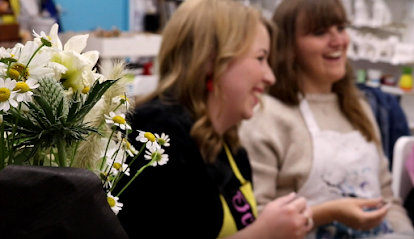
National Trust of Guernsey Victorian Shop and Parlour at 26 Cornet Street
Explore Guernsey's heritage at the National Trust's Victorian Shop and Parlour, where nostalgia meets craftsmanship in a charming setting.
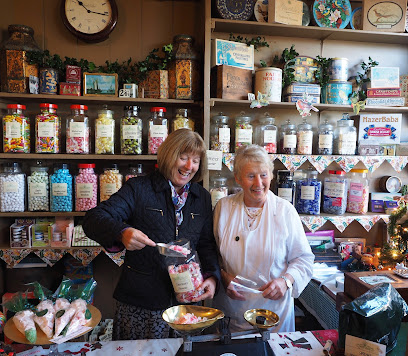
Cadeaux Guernsey Gift Shop
Explore Cadeaux Guernsey Gift Shop for unique gifts and local treasures that capture the spirit of the Channel Islands.
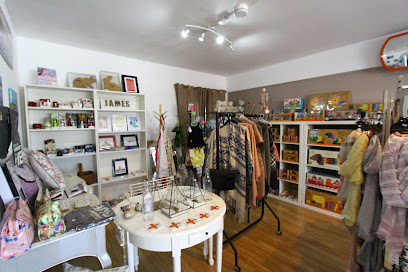
Capelles Building Stores Limited
Explore Capelles Building Stores in Guernsey for exceptional home improvement supplies, from tiles to bathroom essentials, all under one roof.
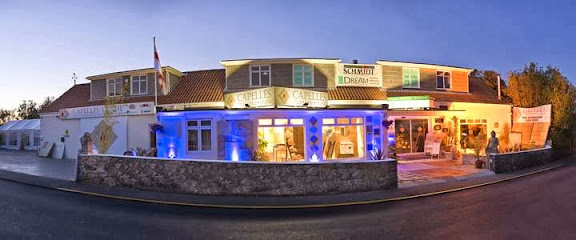
The Guernsey Shop
Explore The Guernsey Shop for unique gifts and local treasures that perfectly capture the spirit of Guernsey's rich culture and heritage.
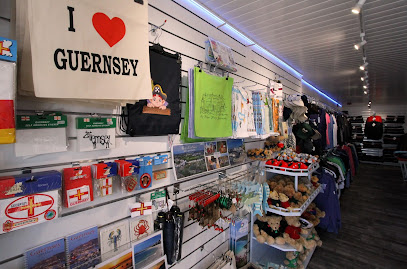
The Wine Alley
Explore The Wine Alley in Guernsey for an exquisite selection of local and international wines and liquors, perfect for all occasions.
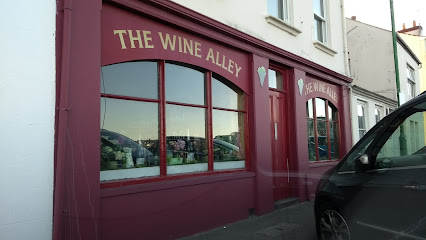
Chateau Des Tielles
Discover the serene beauty of Chateau Des Tielles, a peaceful nursing home surrounded by the stunning landscapes of Guernsey.

Health Connections
Discover Health Connections in Guernsey: A charitable hub dedicated to enhancing health and well-being in the community.
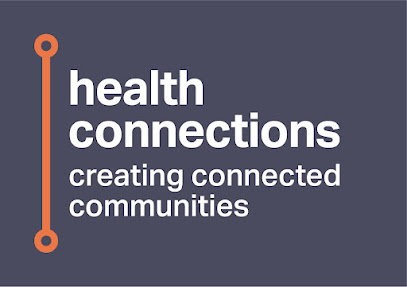
Checkers Xpress
Explore Guernsey with ease by visiting Checkers Xpress, your ultimate convenience store for snacks, drinks, and essentials.
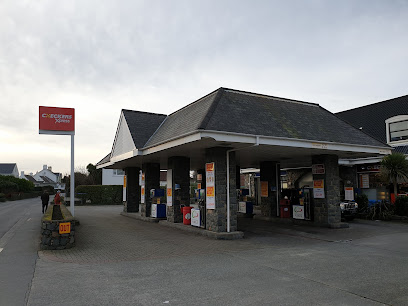
Essential bars & hidden hideouts
The Rockmount - Randalls
Experience the coastal charm and culinary delights at The Rockmount - Randalls, a top gastropub in Guernsey.
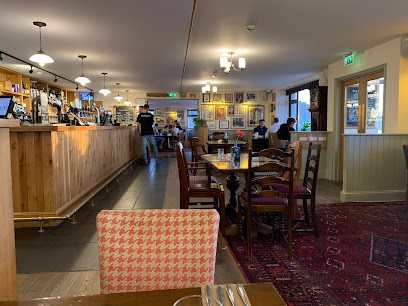
Slaughterhouse - Randalls
Experience the culinary excellence of Slaughterhouse - Randalls, where fresh local ingredients meet stunning views in Guernsey.
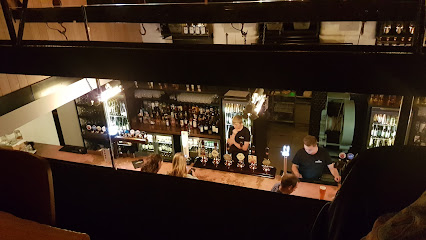
Thomas De La Rue
Discover the charm of Thomas De La Rue, Guernsey's premier gastropub for delicious food, refreshing drinks, and a vibrant community atmosphere.
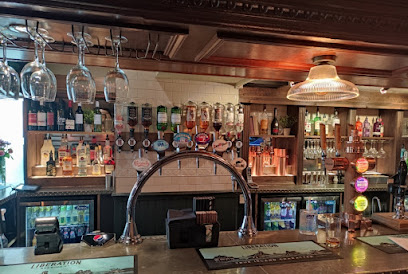
The Deerhound
Experience the charm of Guernsey at The Deerhound, a delightful gastropub and inn offering local flavors and cozy accommodations.
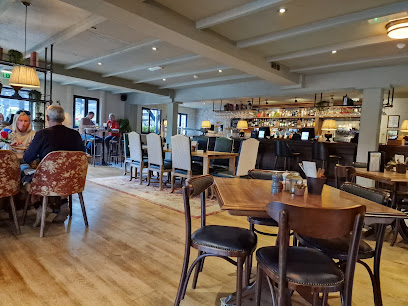
Fleur du Jardin
Experience the charm of Guernsey at Fleur du Jardin, a delightful hotel with a welcoming pub and restaurant offering local flavors and hospitality.

La Piette Hotel
Discover comfort and coastal charm at La Piette Hotel, your ideal retreat in St. Peter Port, combining excellent lodging with delightful dining experiences.

The Doghouse
Experience the best of Guernsey's gastronomy and nightlife at The Doghouse, your go-to gastropub for grilled delights and live entertainment.
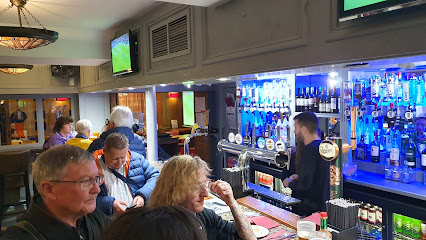
The Last Post - Mint Brasserie
Discover the flavors of Guernsey at The Last Post - Mint Brasserie, where every meal is a celebration of local and international cuisine.
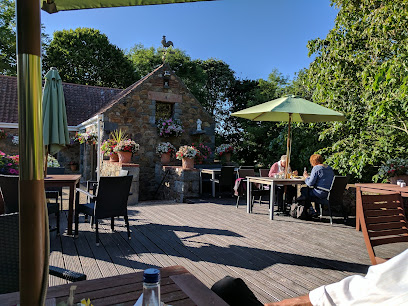
Pickled Pig
Experience the perfect blend of local flavors and contemporary cuisine at Pickled Pig, a must-visit restaurant in Guernsey.
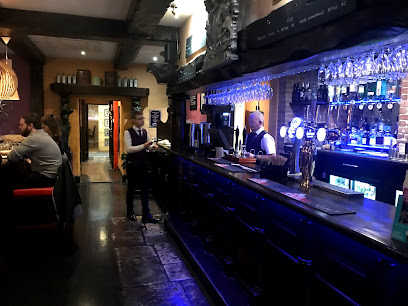
Amigos
Discover Amigos in Guernsey, the vibrant cocktail bar where every drink tells a story, and every night is memorable.
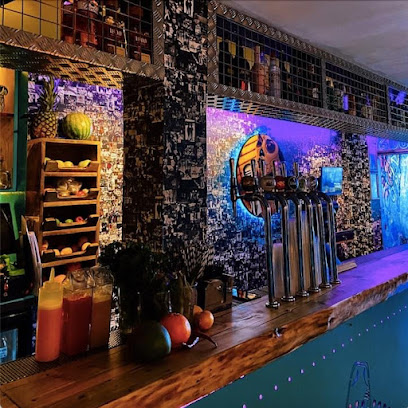
Balthazar
Experience culinary excellence at Balthazar, a premier restaurant in Guernsey, where local flavors meet stunning harbor views.
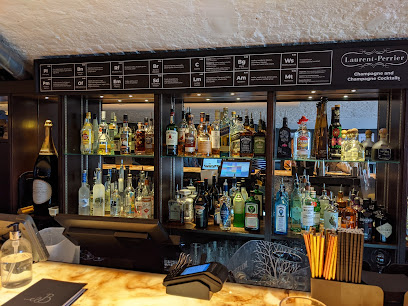
The Wicked Wolf
Discover the culinary charm of The Wicked Wolf in Guernsey, where local flavors and a cozy atmosphere come together for an unforgettable dining experience.
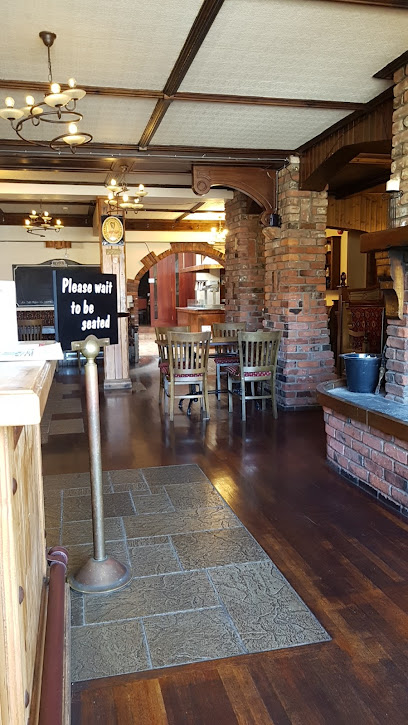
Copenhagen Bar and Grill
Discover the perfect blend of local flavors and grill specialties at Copenhagen Bar and Grill, a must-visit culinary destination in Guernsey.
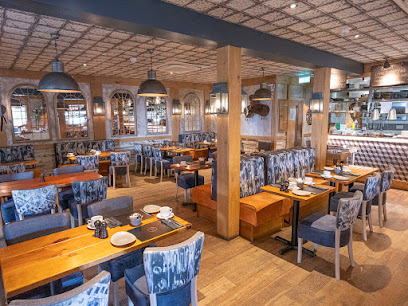
La Fontaine Inn - Randalls
Experience the warmth and flavor of Guernsey at La Fontaine Inn - Randalls, a charming pub offering delicious food and a variety of local drinks.
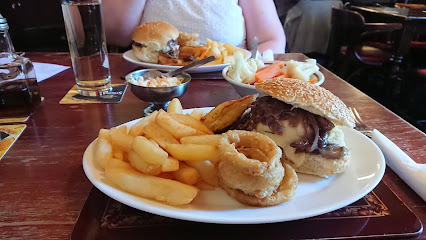
JB Parkers' Bar & Cellar
Discover the exquisite flavors of wine and cuisine at JB Parkers' Bar & Cellar in Guernsey's vibrant dining scene.
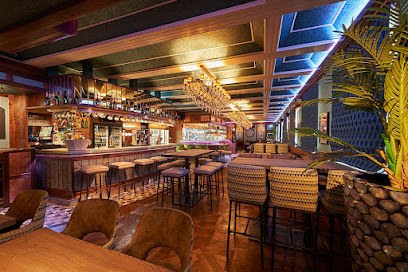
Local Phrases about Les Tielles
-
- HelloAllo
[al-loh] - GoodbyeA bétôt
[ah beh-toh] - YesWi
[wee] - NoNou
[noo] - Please/You're welcomeS'i vous plait
[see voo pleh] - Thank youMerci
[mehr-see] - Excuse me/SorryPardonnez-mé
[par-dohn-ay meh] - How are you?Coumme est-tu?
[coo-may eh too] - Fine. And you?Bian. Et tu?
[bee-ahn. eh too] - Do you speak English?Parlez-vous Angliais?
[par-lay voo ahn-glay] - I don't understandJe ne comprends pas
[zhuh nuh kohm-prahn pah]
- HelloAllo
-
- I'd like to see the menu, pleaseJe veurs veir le menu, s'i vous plait
[zhuh vur vair luh menuh, see voo pleh] - I don't eat meatJe ne mang' pas de viande
[zhuh nuh mahnj pah duh vee-ahnd] - Cheers!Santé!
[san-tay] - I would like to pay, pleaseJe veurs payer, s'i vous plait
[zhuh vur pay-ay, see voo pleh]
- I'd like to see the menu, pleaseJe veurs veir le menu, s'i vous plait
-
- Help!Au secours!
[oh seh-coor] - Go away!Allez-vous en!
[ah-lay vooz ahn] - Call the Police!Appelez la police!
[ah-pel-ay lah poh-lees] - Call a doctor!Appelez un médecin!
[ah-pel-ay ahn meh-deh-sahn] - I'm lostJe suis perdu
[zhuh swee pair-doo] - I'm illJe suis malade
[zhuh swee mah-lahd]
- Help!Au secours!
-
- I'd like to buy...Je veurs ach'ter...
[zhuh vurz ash-tay] - I'm just lookingJe suos just' en train de regarde
[zhuh swee just ahn trahn duh ruh-gard] - How much is it?Ça coûte combien?
[sah coot kohm-byen] - That's too expensiveÇa c'est trop cher
[sah say troh shehr] - Can you lower the price?Pouvez-vous baisser le prix?
[poo-vay voo bay-say luh pree]
- I'd like to buy...Je veurs ach'ter...
-
- What time is it?Quelle heure est-il?
[kell uhr eh-teel] - It's one o'clockIl est une heure
[eel ehz oon uhr] - Half past (10)Demi-dix
[deh-mee-dees] - MorningMatin
[mah-tan] - AfternoonAprès-midi
[ah-pray-mee-dee] - EveningSoir
[swahr] - YesterdayHier
[yehr] - TodayAujourd'hui
[oh-zhoor-dwee] - TomorrowDemain
[duh-mahn] - 1Un
[uhn] - 2Deux
[duh] - 3Trois
[twah] - 4Quatre
[kat] - 5Cinq
[sank] - 6Six
[sees] - 7Sept
[sept] - 8Huit
[wheat] - 9Neuf
[nurf] - 10Dix
[dees]
- What time is it?Quelle heure est-il?
-
- Where's a/the...?Où est...?
[oo eh] - What's the address?Quelle est l'adresse?
[kell eh lah-dress] - Can you show me (on the map)?Pouvez-vous m'indiquer (sur la carte)?
[poo-vay voo man-dee-kayr soor lah kart] - When's the next (bus)?Quand est le prochain (bus)?
[kahn eh luh proh-shahn bus] - A ticket (to ....)Un billet (pour ....)
[uhn bee-yay (poor)]
- Where's a/the...?Où est...?
History of Les Tielles
-
Les Tielles, a picturesque area in Guernsey, has a rich history that dates back to the Iron Age. Archaeological findings suggest that the region was inhabited by early settlers who were attracted by the fertile land and strategic coastal location. The name 'Les Tielles' itself is derived from Norman French, reflecting the linguistic and cultural influences that have shaped the area over centuries.
-
During the medieval period, Les Tielles fell under the influence of the Normans. The area saw the construction of several stone structures, including a small chapel that served as a place of worship and community gathering. The Norman legacy is still evident today in the architecture and place names scattered throughout Les Tielles.
-
In the 16th century, Guernsey faced threats from various European powers, and Les Tielles played a crucial role in the island's defense. The Guernsey Militia, composed of local men, used the natural landscape of Les Tielles to set up fortifications and lookout points. These efforts were instrumental in protecting the island from invasions and pirate attacks.
-
Les Tielles has a long history of agriculture, which has shaped both its landscape and its culture. The fertile soil and mild climate made it an ideal location for farming, and for centuries, local families cultivated crops and raised livestock. Traditional farming practices, some of which are still in use today, have been passed down through generations, contributing to the area's unique cultural heritage.
-
During World War II, Guernsey, including Les Tielles, was occupied by German forces. The occupation left a lasting impact on the area, with many fortifications and bunkers constructed as part of the Atlantic Wall defense system. These structures can still be seen today and serve as a poignant reminder of this tumultuous period in Les Tielles' history.
-
In contemporary times, Les Tielles has transformed into a vibrant community that celebrates its historical roots while embracing modernity. The area is known for its scenic beauty, with walking trails, coastal views, and historical landmarks attracting both locals and tourists. Cultural events and festivals are held throughout the year, showcasing the rich heritage and communal spirit of Les Tielles.
Les Tielles Essentials
-
Les Tielles is located on the island of Guernsey in the Channel Islands. The nearest airport is Guernsey Airport (GCI), which has frequent flights from the UK and other parts of Europe. Alternatively, you can take a ferry from the UK or France to St. Peter Port, the capital of Guernsey. From St. Peter Port, Les Tielles is easily accessible by local transportation or a short taxi ride.
-
Once in Guernsey, getting around Les Tielles is straightforward. The island's bus service is reliable and covers all major areas, including Les Tielles. Taxis are available but can be expensive. Renting a bicycle or car is a convenient option for exploring at your own pace. Walking is also a pleasant way to explore, given the scenic beauty and compact size of the area.
-
The official currency in Guernsey is the Guernsey Pound (GGP), which is on par with the British Pound (GBP). Both currencies are accepted across the island. Credit and debit cards are widely accepted in hotels, restaurants, and shops. However, it is advisable to carry some cash for smaller establishments and public transport. ATMs are readily available in St. Peter Port and other major areas.
-
Les Tielles and Guernsey, in general, are considered very safe for tourists. Crime rates are low, but it's always wise to take standard precautions. Avoid leaving valuables unattended and stay aware of your surroundings, especially in crowded areas. There are no specific high-crime neighborhoods targeting tourists, but it is always best to stay vigilant.
-
In case of emergency, dial 999 for immediate assistance. Guernsey has excellent healthcare facilities, and the Princess Elizabeth Hospital in St. Andrew's is the main medical center. Pharmacies are available in St. Peter Port and other major areas for minor health issues. It is recommended to have travel insurance that covers medical emergencies.
-
Fashion: Do dress smart-casual, especially when dining out. Avoid overly casual attire in more upscale settings. Religion: Do respect local customs and traditions. While Guernsey is mainly secular, modest attire is appreciated when visiting religious sites. Public Transport: Do be polite and thank the driver when getting off the bus. Don’t speak loudly or play music on public transport. Greetings: Do greet people with a friendly 'hello' or a handshake. Avoid overly formal greetings. Eating & Drinking: Do try local delicacies like Guernsey Gâche and seafood. Don’t tip excessively; a small gratuity is usually sufficient.
-
To experience Les Tielles like a local, visit the weekly markets where you can buy fresh produce and local crafts. Engage with locals at pubs and cafés, as they are often friendly and willing to share stories about the island. Don't miss the coastal walks, which offer stunning views of the cliffs and sea. For a unique experience, consider taking a boat trip around the island for a different perspective of Guernsey’s natural beauty.
Trending Landmarks in Les Tielles
-
Castle Cornet
-
The Little Chapel
-
Saumarez Park
-
Hauteville - Victor Hugo House
-
German Occupation Museum
-
Sausmarez Manor
-
German Underground Hospital
-
Fort Grey Shipwreck Museum
-
Fort Hommet
-
Vale Castle
-
Moulin Huet Bay
-
La Valette Underground Military Museum
-
German Naval Signals HQ
-
Table des Pions - Fairy Ring
-
Bluebell Woods
Nearby Cities to Les Tielles
-
Things To Do in Forest
-
Things To Do in Castel
-
Things To Do in St. Andrew
-
Things To Do in St. Martin
-
Things To Do in Vale
-
Things To Do in St. Peter Port
-
Things To Do in St. Sampson
-
Things To Do in St. Anne
-
Things To Do in St. Ouen
-
Things To Do in St. Peter
-
Things To Do in St. Brelade
-
Things To Do in St. Lawrence
-
Things To Do in St. Aubin
-
Things To Do in Trinity
-
Things To Do in St. Helier

